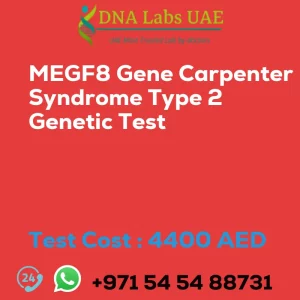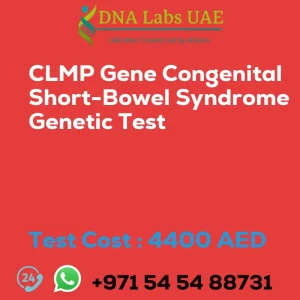SNAP29 Gene Cerebral dysgenesis neuropathy ichthyosis palmoplantar keratoderma syndrome Genetic Test
Test Details
The SNAP29 gene is associated with a rare genetic disorder called Cerebral dysgenesis, neuropathy, ichthyosis, palmoplantar keratoderma (CINP) syndrome. This syndrome is characterized by multiple symptoms including developmental delay, intellectual disability, seizures, peripheral neuropathy, ichthyosis (a skin condition characterized by dry, scaly skin), and palmoplantar keratoderma (thickening of the skin on the palms and soles).
NGS (Next-Generation Sequencing) genetic testing can be used to analyze the DNA sequence of the SNAP29 gene and identify any genetic variations or mutations that may be present. This type of testing can help confirm a diagnosis of CINP syndrome and provide information about the specific genetic variant causing the condition. Genetic testing for CINP syndrome can be beneficial for individuals suspected to have the disorder, as it can help guide clinical management and provide information about the inheritance pattern of the condition. It can also be useful for family members who may be at risk of carrying the same genetic variant.
It is important to consult with a healthcare professional or genetic counselor to determine if NGS genetic testing is appropriate and to understand the potential benefits and limitations of the test.
Test Name: SNAP29 Gene Cerebral dysgenesis neuropathy ichthyosis palmoplantar keratoderma syndrome Genetic Test
Components:
- Price: 4400.0 AED
- Sample Condition: Blood or Extracted DNA or One drop Blood on FTA Card
- Report Delivery: 3 to 4 Weeks
- Method: NGS Technology
- Test type: Dysmorphology
- Doctor: Pediatrics
- Test Department: Genetics
- Pre Test Information: Clinical History of Patient who is going for SNAP29 Gene Cerebral dysgenesis, neuropathy, ichthyosis, palmoplantar keratoderma syndrome NGS Genetic DNA Test. A Genetic Counselling session to draw a pedigree chart of family members affected with SNAP29 Gene Cerebral dysgenesis, neuropathy, ichthyosis, palmoplantar keratoderma syndrome NGS Genetic DNA Test gene SNAP29
| Test Name | SNAP29 Gene Cerebral dysgenesis neuropathy ichthyosis palmoplantar keratoderma syndrome Genetic Test |
|---|---|
| Components | |
| Price | 4400.0 AED |
| Sample Condition | Blood or Extracted DNA or One drop Blood on FTA Card |
| Report Delivery | 3 to 4 Weeks |
| Method | NGS Technology |
| Test type | Dysmorphology |
| Doctor | Pediatrics |
| Test Department: | Genetics |
| Pre Test Information | Clinical History of Patient who is going for SNAP29 Gene Cerebral dysgenesis, neuropathy, ichthyosis, palmoplantar keratoderma syndrome NGS Genetic DNA Test. A Genetic Counselling session to draw a pedigree chart of family members affected with SNAP29 Gene Cerebral dysgenesis, neuropathy, ichthyosis, palmoplantar keratoderma syndrome NGS Genetic DNA Test gene SNAP29 |
| Test Details |
The SNAP29 gene is associated with a rare genetic disorder called Cerebral dysgenesis, neuropathy, ichthyosis, palmoplantar keratoderma (CINP) syndrome. This syndrome is characterized by multiple symptoms including developmental delay, intellectual disability, seizures, peripheral neuropathy, ichthyosis (a skin condition characterized by dry, scaly skin), and palmoplantar keratoderma (thickening of the skin on the palms and soles). NGS (Next-Generation Sequencing) genetic testing can be used to analyze the DNA sequence of the SNAP29 gene and identify any genetic variations or mutations that may be present. This type of testing can help confirm a diagnosis of CINP syndrome and provide information about the specific genetic variant causing the condition. Genetic testing for CINP syndrome can be beneficial for individuals suspected to have the disorder, as it can help guide clinical management and provide information about the inheritance pattern of the condition. It can also be useful for family members who may be at risk of carrying the same genetic variant. It is important to consult with a healthcare professional or genetic counselor to determine if NGS genetic testing is appropriate and to understand the potential benefits and limitations of the test. |








